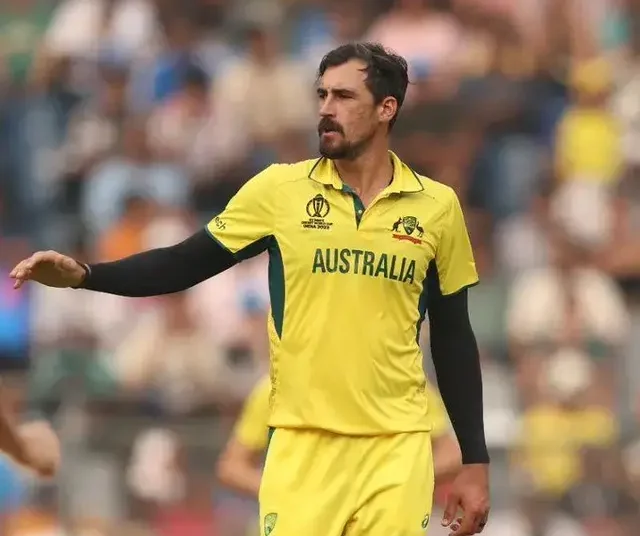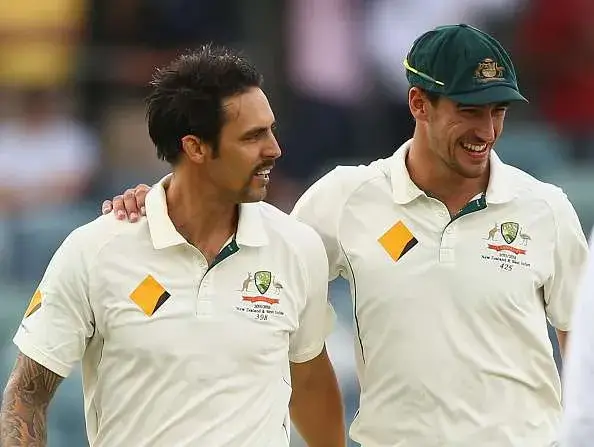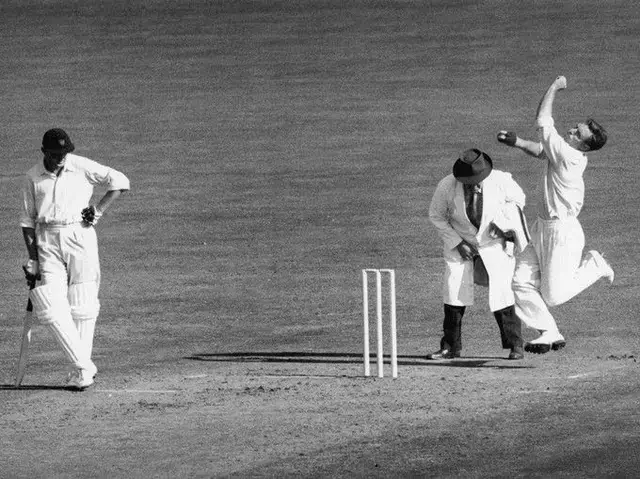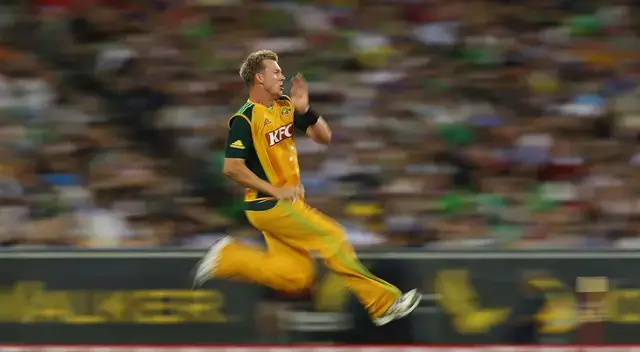Imagine a cricket ball rocketing down the pitch, rising sharply towards the batsman’s head. The bouncer is a fast bowler’s ultimate weapon to intimidate and disrupt. In Australia, bouncers aren’t just deliveries; they’re a strategic cornerstone honed by some of the game’s greatest pacers.
Australia’s fast bowling legacy—from Dennis Lillee to Pat Cummins—thrives on this short-pitched menace. Their bouncy pitches, like Perth’s Optus Stadium, amplify its impact. But it’s not just about pace; the cunning use of bouncers sets Australia apart.
This article explores how Australia transforms bouncers into a tactical masterpiece. We’ll uncover their techniques, psychological edge, and pivotal moments that showcase this strategy. Whether unsettling top batsmen or rattling tail-enders, Australia’s bouncer game combines skill and strategy. Let’s dive into how they dominate with this lethal delivery.
The Craft Behind Australia’s Bouncer Mastery
Australia’s bouncer isn’t just a ball—an art form perfected over decades. Bowlers like Brett Lee and Mitchell Starc use raw pace and precision to make it unplayable. It’s about timing, trajectory, and sheer intimidation.
Their training emphasizes wrist snap and body position to maximize bounce. This becomes a nightmare for batsmen on Australia’s hard, fast pitches. The bouncer’s unpredictability keeps opponents guessing every over.
Coaches play a significant role, too—legendary figures like Troy Cooley refine these skills. They teach bowlers to disguise intent by blending bouncers with fuller lengths. This keeps the batsman off balance.
As per ESPN, Australia’s pace academy produces bowlers who excel in short-pitched bowling. It’s not just physical; it’s a mindset. The bouncer is their signature crafted to dominate.
Johnson’s Reign: The 2013-14 Ashes
Mitchell Johnson’s bouncers in 2013-14 were relentless—England had no answer, as they often failed against Afghanistan. He took 37 wickets, many from short balls. Batsmen like Jonathan Trott faltered in England against Australia.
His pace—often above 150 kph—combined with bounce was devastating. The series shifted Australia’s way fast. It’s a benchmark for bouncer strategy.
Secrets of Execution: Skill Meets Precision
Australian bowlers train relentlessly to perfect the bouncer’s height and direction. It’s about hitting the deck hard, often between 7-8 meters from the batsman. This forces awkward decisions: duck or defend.
Pace isn’t enough; control is key. Glenn McGrath’s disciplined line made his bouncers lethal. Young bowlers learn this early at academies like the MRF Pace Foundation.
Outsmarting Batsmen: The Element of Surprise
Variation is Australia’s secret sauce—think slower bouncers or wide ones. Starc often mixes pace to catch batsmen off guard. It’s psychological as much as technical.
A surprise bouncer after full deliveries disrupts the rhythm. Batsmen expecting length balls suddenly face a rising threat. This deception creates wickets or defensive play, as noted by BBC Sport.
Timing the Attack: When Bouncers Strike
Australia doesn’t bowl bouncers randomly—it’s a calculated move. Captains like Ricky Ponting use them to shift momentum. A well-timed bouncer can break partnerships or expose weaknesses.
They target specific moments: a set batsman or a newcomer at the crease. It’s about exploiting fatigue or inexperience. On bouncy tracks like the Gabba, this tactic shines.
The bouncer often follows a spell of full-length balls. This contrast catches batsmen unprepared, forcing errors. As Sanjay Manjrekar notes, there’s intent behind every short ball [X post].
It’s not just aggression; it’s strategy. Australia uses bouncers to dictate terms, not just react. This makes them a step ahead in the tactical game.
Cracking the Top Order: Testing Resilience
Top-order batsmen face Australia’s bouncers as a rite of passage. A short ball to a settled player—like Steve Smith—tests technique and nerve. It’s about planting doubt.
In the 2019 Ashes, Cummins rattled Joe Root with pace and bounce. Such moments shift pressure back to the batting side. The bowler gains control.
Cleaning Up the Tail: Ruthless Efficiency
Tail-enders dread Australia’s bouncers—and for good reason. Less skilled at handling pace, they’re prime targets. A single short ball can end an innings.
Mitchell Johnson’s spells against England tail-enders in 2013-14 were brutal. Its efficiency meets intimidation. Australia wraps up games fast this way.
Mind Games: The Bouncer’s Psychological Edge
Bouncers do more than challenge technique—they mess with the head. The fear of a 140 kph ball aimed at you lingers. Australia exploits this brilliantly.
Batsmen become tentative after a bouncer barrage. They second-guess their shots, opening doors for fuller deliveries. It’s a mental chess match won by the bowler.
Michael Holding once said bouncers create a “survival instinct” in batsmen. Australia turns this instinct into wickets. Their bowlers thrive on this edge.
The crowd amplifies it too—roars at the MCG unsettle visiting teams. It’s not just a delivery; it’s psychological warfare. Australia knows how to weaponize fear.
Fear Factor: Shadows of Injury
A bouncer’s threat isn’t abstract—helmets don’t erase the risk. Phil Hughes’ tragic injury in 2014 looms large. Batsmen know this history.
This fear makes them defensive or rash. A pulled shot off a bouncer often flies to a waiting fielder. Australia banks on this reaction, much like their neighbour New Zealand, which has troubled India in CT 2025.
Disrupting Focus: Breaking the Zone
A batsman in the zone is dangerous, but a bouncer snaps them out. It forces a reset, breaking concentration mid-over. Australia times this perfectly.
After a bouncer, batsmen often play safer shots. This shift hands momentum back to the bowler. It’s a subtle but game-changing tactic; it works as Zimbabwe also created upsets in 2024.
Defining Moments: Bouncers That Made History
Australia’s bouncer legacy shines in iconic matches. These moments define their strategic brilliance. From Ashes battles to home Tests, they deliver like a godfather on the pitch.
The 2013-14 Ashes saw Mitchell Johnson unleash terror with short-pitched bowling. England crumbled under the onslaught. It was a masterclass in pace and strategy.
More recently, Pat Cummins’ bouncers in the 2023 Ashes troubled England’s top order. Australia’s bowlers keep this tradition alive. Each series adds to the legend.
These aren’t flukes—they’re planned assaults. Captains set fields like leg gully to trap false shots. History proves the bouncer’s enduring power in Australian hands.
Modern Titans: Cummins and Starc Shine
Pat Cummins and Mitchell Starc carry the torch today. In 2023, Cummins’ bouncers unsettled Ollie Pope at Lord’s. Starc’s left-arm angle adds variety.
Their spells—like in the 2021 Ashes—showcase control and aggression. Australia’s bouncer game evolves but stays lethal. It’s an unbroken tradition, and they used it in CT 2025 against teams like India in the semi-final.
Numbers Tell the Tale: Bouncer Impact
Bouncers aren’t just flair—they deliver results. In Test cricket, they’re a key wicket-taking tool for Australia. Stats underline their effectiveness.
A Journal of Sports Science study suggests short-pitched balls induce errors. Australia’s bowlers capitalize on this. Their success rate is no accident.
Here’s a look at the 2023 Ashes:
|
Bowler |
Bouncer Wickets |
Total Wickets |
Bouncer % |
|---|---|---|---|
|
Pat Cummins |
6 | 22 | 27% |
|
Mitchell Starc |
5 | 19 | 26% |
|
Josh Hazlewood |
4 | 16 | 25% |
This table shows the bouncers’ role in Australia’s attack. They’re not the only weapon, but a vital one. Data backs their strategic edge.
Conclusion
Australia’s use of bouncers is a masterstroke of cricket strategy. It blends raw skill with sharp tactics and mental dominance. From Lillee’s fire to Cummins’ precision, it’s a legacy that endures.
The bouncer unsettles tests and finishes—top order or tail, it doesn’t matter. Australia’s bowlers wield it with intent backed by bouncy pitches and astute captaincy. Psychologically, it’s a game-changer, turning confidence into caution, unlike South Africa, which fails to impress in the knockout stages.
Historic moments like Johnson’s 2013-14 Ashes rampage prove its might. Stats reinforce its value in their bowling arsenal. Australia doesn’t just bowl bouncers—they craft victories with them.
This strategic weapon remains a hallmark of their cricketing identity. It’s why they stay a step ahead on the global stage. The bouncer isn’t just a delivery; it’s Australia’s edge.









